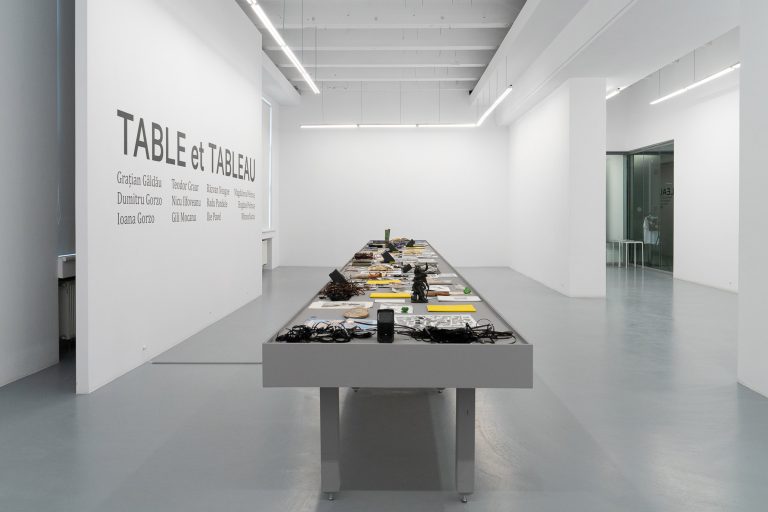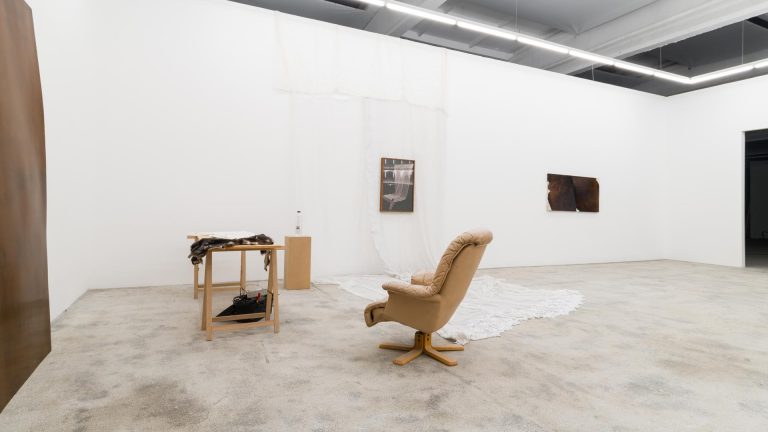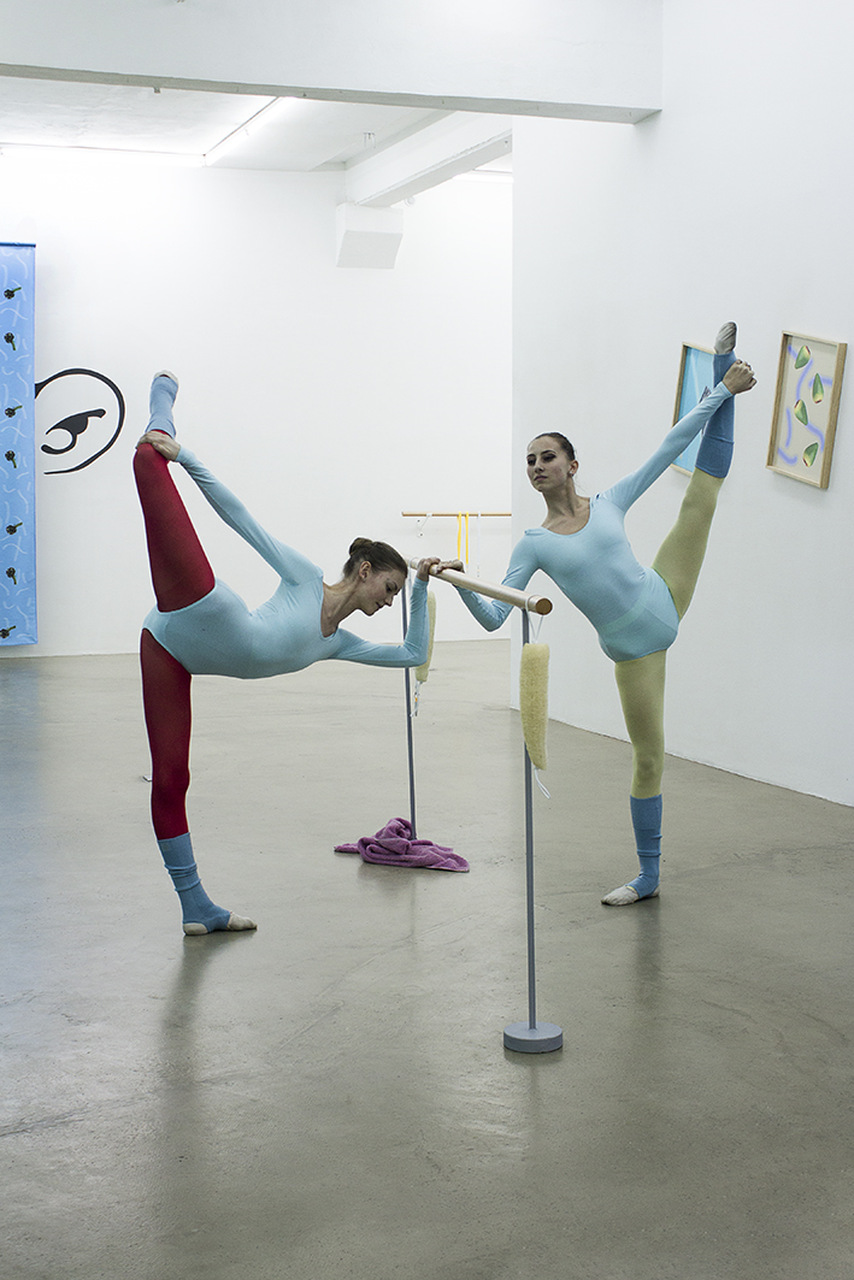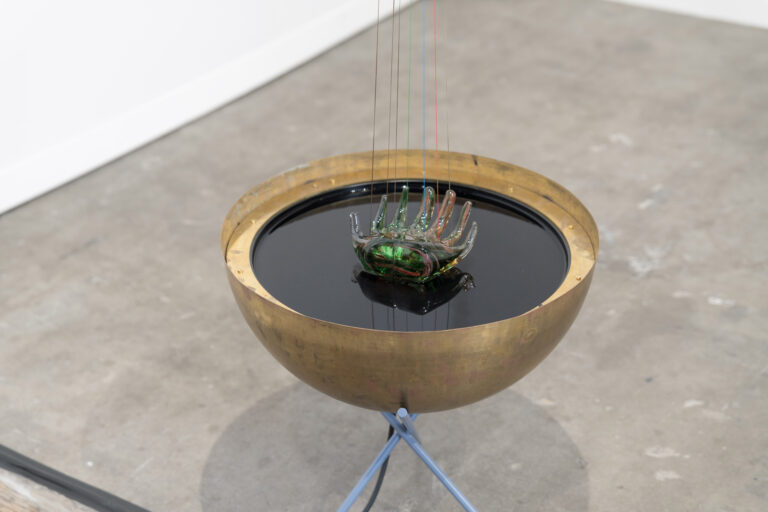Artist: Cristina Garrido
Exhibition title: Unfair Show
Curated by: Francesco Giaveri
Venue: BARIL, Cluj, Romania
Date: August 10 – September 28, 2017
Photography: all images copyright and courtesy of the artist and BARIL
Baril proudly presents the first exhibition by Cristina Garrido (Madrid, 1986). Unfair Show explores the physical and conceptual distance between what we see and its context. Visiting a show entails experiencing a fiction. The exhibition discourse is organized through a disposition of artworks in a space. It is articulated through a relationship – either established or accidental – between the artworks and the viewer. The distance between the images and the contextual reading of the artwork separates what we see from what we believe to see. The framework in which we operate inevitably modifies what we perceive and, at the same time, it distorts our enunciations. To propose an exhibition implies accepting that we speak from a contradictory position. By necessity we play the game whilst criticizing its rules. The idea is not so much about adding one image more but proposing a fair image instead. One that contains a critical reading of what surrounds us, including self-criticism. To do so, Garrido gets involved with painting and she reclaims the presence of the viewer to structure her discourse on the functioning of the system of art. An unfair reading by the viewer would be the best outcome possible.
By way of introduction, at the entrance of the space the artist reproduces as a wall painting a letter of an old employer. The text uses formal language and upholds Garrido’s organizational skills and positive attitude in the labor market. Following suit, we see a series of works that focuses on the contemporary art system. The links between the art system and the general economic system are inseparable, even if the first claims a detachment from the latter. Garrido here spots a useful field to question the power relations that rule us. The letter describes a human being through her work capacity and functionality to fulfill her labor tasks. It asserts Cristina can be a profitable asset for future jobs. The introduction of this personal archival note at the beginning of the show pushes the viewer to establish a remarkable relation between Garrido as a design shop employee and the artist/author of the works in this exhibition. The language and the discourse organization change. However, the distance between the context and individuality originated by these public presentations contains evident analogies.
Aerial photography does not create space but registers surfaces (Image collection) is a collection of images taken from international curators’ Instagram profiles. They have been grouped according to their thematic equivalence and distributed as a kind of frieze going across the space. All the squared pictures show views taken from airplanes: clouds and plane wings, lights and skies. Documentation of trips, inevitably they are as poetic as trivial. Social networks have turned us all into image producers, but fortunately not all of us are artists. Authorship doesn’t always hide an author but sometimes simply a user of a mobile phone application. This collection of images is placed high in the space, evidencing a distance and, at the same time, it also shows different points of view: ours and theirs.
Dean McCannell, in his classic essay on tourism, identified in the desire for authenticity the engine that drives millions of people to travel, in order to know different contexts to the ones they belong. However, what these people often find in their drifts is the opposite of what they are looking for: substitutes of authenticity. Something similar occurs in the art system. We see thousands of images every day in social networks, magazines or art fairs where the distributor determines the rules and possibilities. The context tends to be erased and what we see is an infinite surface of a partial experience, fragmented, limited by space, and contaminated by other images with a disorientating an uncertain origin. Cristina Garrido proposes precisely a reflection in a no man’s land between the authentic and its substitute; between what we see and what we believe we are seeing (or recognizing).
In The Social Life of ´Untilled (Liegender Frauenakt)´, Garrido traces on Instagram the images documenting the homonymous work by Pierre Huyghe. On a sequence of more than 800 images, the swarm and the sculpture´s location mutate; since its presentation in Documenta13 until its installation at MoMA. The classic sculpture with the hive head introduces the concept of ‘hive mind’. Hive mind refers to network and interconnections between people as potentialities, unexplored until recently. Garrido’s appropriation of images indiscriminately produced by the spectators of Huyghe’s work follows this idea of collective work, and shared authorship between artists and audience. Undoubtedly, technical advances imply extraordinary possibilities, although their commercial purposes are rarely conceived to benefit the population. However, this work gathers preexistent images and connects them, demonstrating the possibility to build bridges; of creating a shared experience through an assembling process that puts fragments together in order to build a narrative. More and more, fiction is establishing itself as the only process that allows us to touch reality.
In the video #JWIITMTESDSA? (Just what is it that makes today´s exhibitions so different, so appealing?) we see unfolding an image archive with exhibition views ordered according to 21 formal categories: classical antiquity, circles, grids, plants, etc. The artist has gathered more than 3,000 images from sites as Contemporary Art Daily, This is tomorrow, gallery webpages and social networks. She has identified patterns that empirically guarantee the perfect display for a contemporary art exhibition. The audio seeks plausible explanations for this evidence. It collects observations and reflections by curators, artists and collectors interviewed by the artist, who comment on what they see on the video. Most of them experience contemporary art mediated by screens and devices, rather than visiting directly exhibitions. The distance between the visit to a gallery or a museum and its vision through an electronic interface poses a series of questions on authenticity and representation. Without going any further, the role of the photographer documenting the show emerges as an author that communicates a personal, biased perception of the artists’ work.
In this project, Cristina Garrido proposes an unfair exhibition rather than a normalized show. According to Douglas Crimp, “through reproductive technology postmodernist art dispenses with the aura. The fiction of the creating subject gives way to the frank confiscation, quotation, excerptation, accumulation and repetition of already existing images. Notions of originality, authenticity and presence, essential to the ordered discourse of the museum, are undermined”. The fiction presented in Baril’s exhibition space alters the order of the original material, questions its authenticity and, finally, displaces the sense of the images to propose other possibilities and distances.
A diptych presents magazines advertising sheets in which the images and colors have been removed, only leaving the drawn names of the institutions and artists. Purchased advertising in specialized media modifies our perception of what we learn and the value we attribute to it. The artworks leave an intentional blank space, a void to reflect on power relations and value construction. Sometimes it is the seal given by Art History, the symbolic value, through critical texts or influences testified by evident imitative practices; others it is the economic value of some artworks; a sort of hazardous “je ne sais quoi”.
On the opposite wall we see paper mache balls and international art magazines’ spines. The heaps of each magazine contain on one side the advertising pages and, on the other, those devoted to critical texts and interviews. The resulting proportions in themselves organize an efficient metaphor of diverse and contradictory aspects of the art world.
Three bags of widely known artistic institutions (‘Tote Bag Paintings’), such as Museo Reina Sofía, Frieze Masters and Hauser & Wirth, complete the exhibition. The bags have been repainted and transformed into paintings. The logo and names of the institutions themselves impose a value, as they are power symbols within the art system. When turned into paintings, Garrido draws an analogy: between an ephemeral marketing tool and a painting whose surface ironically evidences the mausoleum these institutions have become, and our continuous and irremediable participation in them.





















